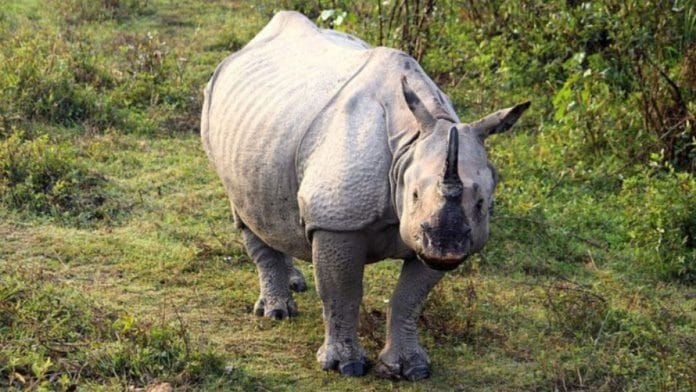New Delhi: Despite national and international efforts, wildlife trafficking persists worldwide, a new United Nations report has said.
The third edition of the UN World Wildlife Crime Report 2024, released Monday, noted that the intercepted illegal wildlife trade — as a proportion of all wildlife trade — saw an increase from 2017 onwards.
According to the findings, the proportion of wildlife crimes peaked in 2020 and 2021 during the COVID-19 pandemic. Wildlife seizures rose to 1.4-1.9 percent of the global wildlife trade between 2020 and 2021, against 0.5-1.1 percent seen between 2017 and 2019.
“Wildlife crime inflicts untold harm upon nature and it also jeopardises livelihoods, public health, good governance and our planet’s ability to fight climate change,” the United Nations Office on Drugs and Crime’s (UNODC) executive director, Ghada Waly was quoted in the report as saying.
While there was a reduction in the trafficking of certain species, including elephants and rhinoceros, the UNODC’s assessment showed no evidence that there was a dip in overall wildlife trafficking.
The report credited the reduction in the trafficking of elephants and rhinos to concerted efforts in dismantling large trafficking networks and the suppression of demand in key markets.
Also Read: At UNFF 19, India showcases its sustainable forest management success, expansion of protected areas
The worst affected
Despite the reduction, rhino horns comprised the largest share of the illegal wildlife market, constituting 29 percent. Following closely were pangolin scales at 28 percent and elephant ivory at 15 percent. The global illegal trade also significantly affected crocodiles, eels, cockatoos, parrots, turtles, tortoises, carnivores, seahorses, and snakes.
“The global scope and scale of wildlife crime remain substantial with seizures during 2015–2021, indicating an illegal trade in 162 countries and territories affecting around 4,000 plant and animal species,” the UN report highlighted.
The report pointed out that, apart from the immediate threat to the conservation of species, the population reduction caused by wildlife trafficking could play a role in triggering ecosystem-level impacts by disturbing species interdependencies and compromising climate change resilience and mitigation efforts.
According to UN experts in wildlife crime prevention, while wildlife trafficking significantly contributes to the extinction of many rare species, including orchids, succulents, reptiles, fish, birds, and mammals, it often escapes public attention.
“For example, illegal collection for trade is believed to have led to the recent extinction of several succulent plant species in South Africa. It has also caused substantial depletion of rare orchids, with newly discovered species quickly targeted by poachers and buyers,” the report read.
Evolving tactics of traffickers
Meanwhile, an analysis of over 1,40,000 wildlife species trafficking seizures between 2015 and 2021 revealed the involvement of “powerful organised crime groups” in exploiting vulnerable ecosystems.
“Transnational criminal networks engage in various stages of the trade chain, including export, import, brokering, storage, breeding and selling to customers,” read the report.
The UN said that traffickers continuously adapt their methods and routes to evade detection and prosecution — exploiting regulatory loopholes and enforcement weaknesses.
It added that corruption exacerbated the plight of plants and animals, with officials often turning a blind eye to violations. Despite such a high rate across countries, wildlife crime cases are rarely prosecuted, the report said.
“To address this crime, we must match the adaptability and agility of the illegal wildlife trade. This demands strong, targeted interventions at both the demand and the supply side of the trafficking chain, efforts to reduce criminal incentives and profits, and greater investment in data, analysis, and monitoring capacities,” Waly emphasised.
(Edited by Richa Mishra)
Also Read: Delhi wetlands going extinct. To be found in govt files only






